Every amputee’s journey is shaped by the choices made in the first few weeks after surgery. These early steps don’t just influence healing—they shape how well someone walks, feels, and lives in the years ahead. And at the heart of that journey are two key professionals: the surgeon and the prosthetist. While they work in different ways, their teamwork—especially early on—can make all the difference.
This article explores how surgeons and prosthetists, when they collaborate from the beginning, help create smoother, faster, and more successful outcomes for amputees. It’s not just about getting a prosthetic fitted—it’s about planning the entire process with care, compassion, and precision.
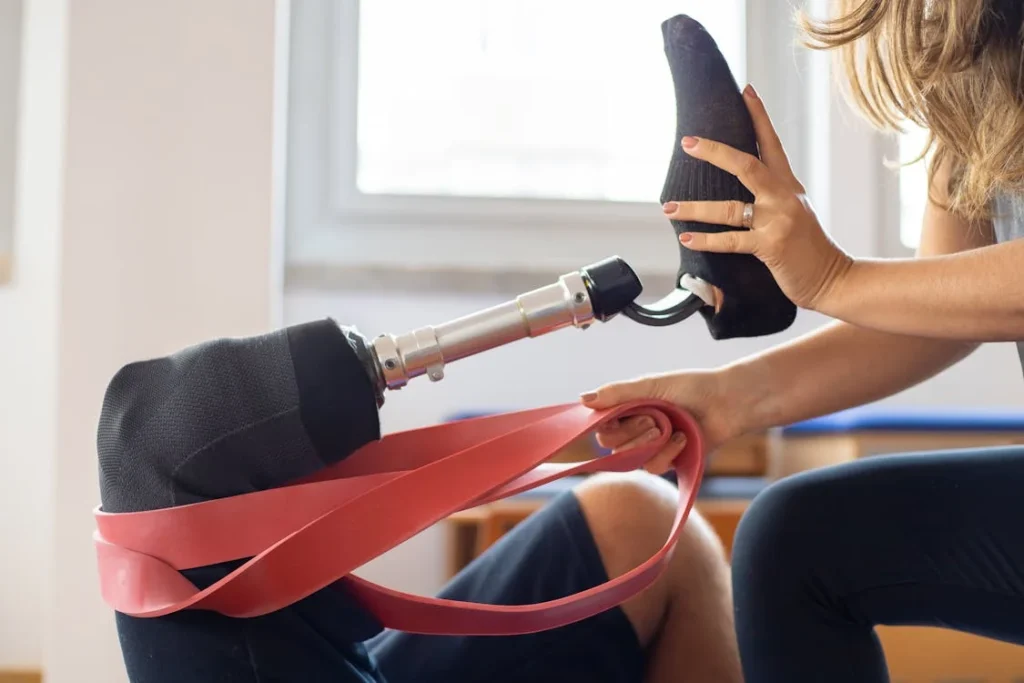
Why Timing in Prosthetic Planning Matters
The Critical Window Right After Amputation
After amputation surgery, most people believe the next step is simply to heal and then think about getting a prosthetic later. But that delay—sometimes weeks or even months—can slow recovery, cause complications, and reduce the long-term success of using a prosthetic limb.
There’s a window, right after surgery, when the body is still adjusting and the brain is still open to change. This is the time when planning for prosthetic fitting should begin.
The earlier the planning starts, the better the outcomes. Muscles remain stronger. Joints stay more flexible. And the person stays emotionally ready for the journey ahead.
However, this planning doesn’t happen by chance. It requires two specialists to step in together: the surgeon who performs the amputation, and the prosthetist who will later design and fit the artificial limb.
When these two professionals talk to each other and include the patient from the beginning, everything flows more smoothly.
The opposite also holds true. When there’s a gap between surgery and prosthetic care, things fall through the cracks. The residual limb may heal in a way that doesn’t support proper socket fitting.
Muscles might weaken due to inactivity. The patient might lose confidence, become anxious, or even avoid rehabilitation altogether.
That’s why timing matters. And it’s why collaboration is key.
How Surgeons Shape Prosthetic Outcomes from Day One
Planning the Amputation With the Future in Mind
Most people assume that prosthetic fitting begins only after the wound has healed. But in reality, successful prosthetic use begins in the operating room.
Surgeons don’t just remove the limb—they also shape what remains. The length of the bone, the amount of muscle preserved, and how the skin is closed all affect whether a prosthetic can be comfortably worn later.
If the surgeon and prosthetist work together before surgery, they can plan an amputation that supports future movement. The surgeon might adjust where the cut is made or how the nerves are handled to reduce pain and improve prosthetic fit.
They might also choose a technique that helps the limb tolerate weight better, or improves its shape for easier socket placement.
But when this coordination doesn’t happen, the results can be frustrating. The prosthetist may receive a residual limb that is too short, too long, or too sensitive to support a prosthetic comfortably.
Fixing these issues often means more surgeries or limited function. That’s a burden no patient should have to bear—especially when it can be avoided with simple, early communication.
Surgeons are also in a unique position to introduce the prosthetic journey to the patient. Their words carry weight. When a surgeon talks positively about prosthetics from the beginning, it builds trust.
It helps the patient feel hopeful, not afraid. It frames the journey ahead not as an ending, but a new chapter.
This emotional tone matters. Many patients feel lost right after amputation. Hearing that a plan is already in motion for their recovery—that a prosthetist is part of the care team—offers comfort. It replaces fear with focus.
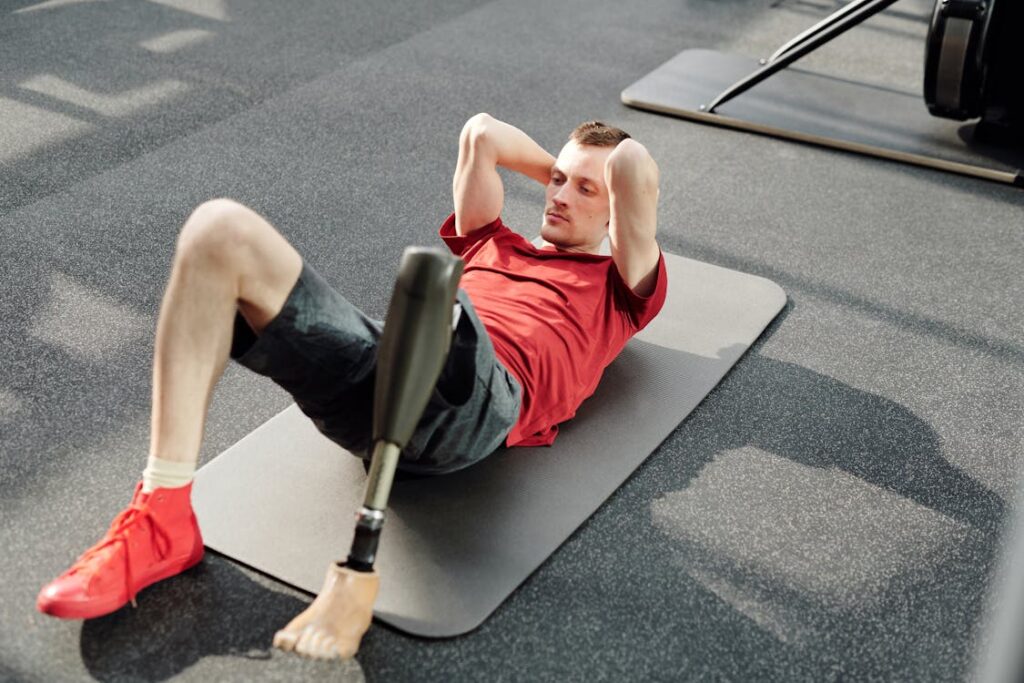
What Prosthetists Bring to the Surgical Planning Table
Designing for Comfort, Function, and Long-Term Use
Prosthetists are experts in movement, alignment, socket design, and the technology that brings limbs to life. While they may not be in the operating room, their input early on can shape how successful the prosthesis will be later.
When involved early, prosthetists can guide the surgeon on how different surgical techniques affect socket comfort. For instance, they might suggest preserving more soft tissue to protect bony areas, or request specific muscle shapes that reduce pressure points inside the socket.
They also understand how weight distribution, joint angles, and limb length affect walking. Their perspective helps ensure that the residual limb is shaped in a way that supports not just standing or walking, but also real-life activities—climbing stairs, carrying bags, getting into a car.
More than that, prosthetists can assess what kind of prosthetic will be needed. If the patient has specific goals—like running, cycling, or working in a physically demanding job—the prosthetist can share these insights with the surgeon so the amputation supports those needs.
This level of planning creates a roadmap for recovery. It makes the difference between someone just getting by with a prosthetic and someone thriving with it.
And just like the surgeon, the prosthetist plays an emotional role too. Meeting with the patient before surgery helps build a relationship. It turns the prosthetist from a stranger into a partner.
When the patient finally comes in for fitting, they’re not starting from zero—they’re continuing a journey that began with trust and support.
How Teamwork Between Surgeons and Prosthetists Builds Stronger Outcomes
Why Collaboration Is More Than Just Good Practice
When two professionals work closely together, outcomes improve—not only because of what they do individually, but because of how well they understand the bigger picture. In the case of prosthetic planning, this relationship is absolutely vital.
Surgeons are experts in saving limbs, preventing infection, and ensuring that the body is physically ready to heal. Prosthetists are focused on mobility, socket alignment, and fitting a device that works in daily life. Their goals are different, but their success depends on one another.
If the surgeon performs a technically flawless amputation but never consults a prosthetist, the residual limb may not support functional walking. Likewise, even the best-designed prosthetic will fall short if it sits on a poorly shaped or overly sensitive limb.
When these two professionals talk—really talk—about the patient’s needs, their lifestyle, and long-term expectations, everything changes. They stop operating in isolation and begin planning as a team. And the patient feels that unity.
It shows in the speed of recovery. In the ease of prosthetic fitting. In fewer adjustments and setbacks. In better therapy sessions. In shorter hospital stays. And most importantly, in a stronger, more confident return to normal life.
This is where healthcare needs to evolve—not just doing things right, but doing them together.
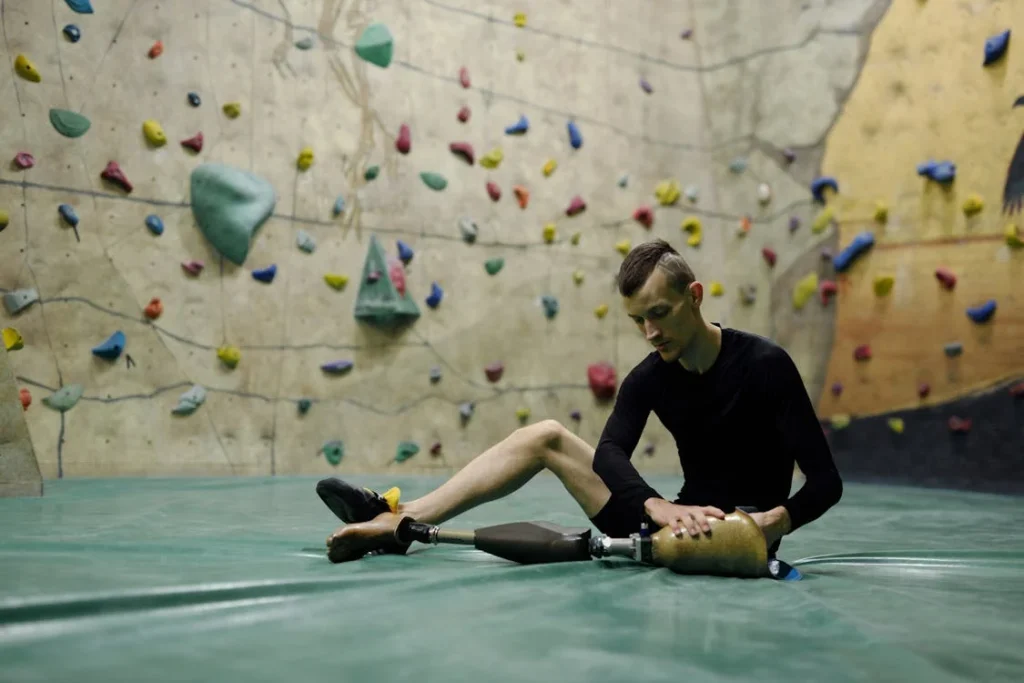
Avoiding Common Delays That Hurt Patient Recovery
Where Things Fall Apart—and How to Fix Them
Despite the best intentions, many systems fail when it comes to timely prosthetic planning. Often, the surgeon finishes the operation and then hands over the case without a clear path for prosthetic integration.
The patient is discharged, goes home, and waits. Sometimes for weeks. Sometimes for months. By the time they meet a prosthetist, the window of optimal healing has passed.
During this delay, the residual limb shrinks too much or stiffens. Scar tissue builds up. The patient becomes fearful of movement. Their confidence drops. And what could have been a smooth transition now becomes a challenging uphill climb.
One of the most common reasons for delay is a lack of communication between departments. Hospitals often treat amputation as a standalone event rather than part of a larger rehabilitation journey. This creates a “gap zone” between surgery and prosthetic fitting.
Another issue is unclear referrals. The patient may be told to “follow up later” with a prosthetist but not given a timeline, a name, or support for how to begin. This lack of guidance causes confusion, especially for patients in rural areas or from lower-income backgrounds.
To fix this, hospitals and rehab centers need structured protocols. Every amputation should include an automatic prosthetic consultation within the first week.
This doesn’t mean the prosthesis will be fitted immediately—but the process will start. The prosthetist can assess healing, prepare the patient emotionally, and offer tools like shrinkers or pre-training exercises.
When systems are designed for connection, delays shrink. And patient outcomes rise.
The Mental and Emotional Benefits of a Unified Team
Hope Comes From Seeing a Plan in Place
Right after an amputation, patients are often flooded with emotion. Shock, sadness, fear, and even guilt. It’s a vulnerable time, and the people around them shape how they move forward.
When a patient sees their surgeon and prosthetist working together—consulting, checking in, updating each other—they feel cared for. They see that a roadmap exists. That their case matters. That people are invested in their recovery.
This builds trust, which is the foundation of emotional healing. Instead of feeling like a victim of circumstance, the patient begins to feel like a person with a future.
Conversely, when there is no plan in place, the mind wanders. Patients start to imagine worst-case scenarios. They might believe they’re stuck, that no one is helping them move forward, or that they’ll never walk again.
These thoughts are heavy, and they create emotional scars that can be difficult to undo.
Mental health is not separate from physical health. A patient who feels supported will show up for rehab. They’ll practice. They’ll ask questions. They’ll stay motivated. A patient who feels alone will retreat. They’ll avoid therapy. They’ll stay still. They’ll give up on themselves.
Surgeons and prosthetists don’t just restore bodies—they restore hope. And they do it best when they work as one.
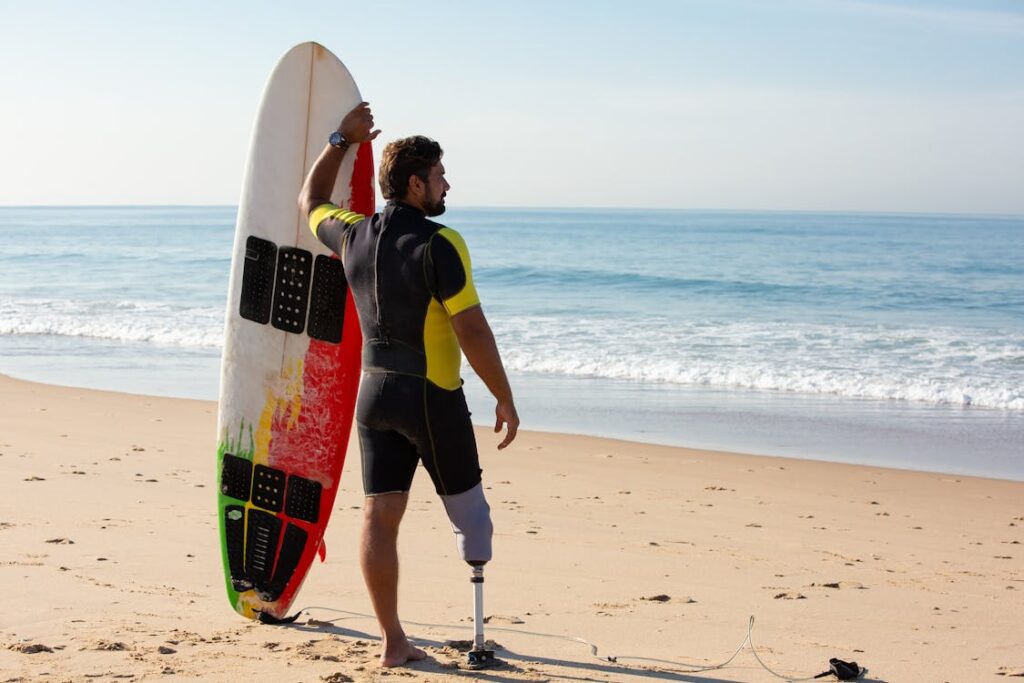
Giving the Patient a Voice in the Planning Process
Informed, Involved, and In Charge
One of the biggest shifts in modern healthcare is the move from passive care to active participation. Patients are no longer just recipients of treatment—they’re partners in planning. And when it comes to prosthetic care, their voice is more important than ever.
Surgeons and prosthetists should both take the time to listen. To ask questions like: What do you want to do after recovery? What are your goals—walking? Running? Working? Traveling? What are you worried about?
When patients are invited into the planning process, they feel respected. They feel seen. They stop being defined by what they’ve lost and start thinking about what they can still achieve.
For example, a younger patient may want a prosthetic leg that supports athletic activity. An older person may prioritize balance and simplicity. A construction worker may need something durable and flexible.
A parent may want to carry their child safely again. Each of these goals affects how the prosthesis is designed, what surgical techniques are chosen, and how therapy is approached.
Early conversations between the medical team and the patient help match the solution to the person—not just to the injury.
That’s how we build true recovery. Not by fixing a leg. But by helping a person rebuild their life on their terms.
Challenges Unique to India—and How We Can Overcome Them
Cultural, Economic, and Systemic Gaps
In India, the need for better prosthetic planning is especially urgent. While top hospitals in cities like Delhi, Mumbai, and Bengaluru offer advanced care, most amputees in semi-urban and rural areas face delays, confusion, and limited access.
Surgeons in smaller hospitals may not have prosthetists on site. Patients often get discharged without rehabilitation plans. Awareness is low, and misinformation is common. Some patients even wait years to begin prosthetic care due to financial hardship or fear.
There are also cultural barriers. In many communities, disability is still seen through a lens of stigma. Patients may hide their amputation, avoid public places, or stay unemployed—not because they can’t work, but because no one told them they could.
To change this, we must focus on education, awareness, and collaboration.
Hospitals should build formal partnerships with prosthetic clinics. Telehealth can be used to connect rural surgeons with prosthetists in cities. Government programs must simplify the process of accessing affordable prosthetic care.
NGOs and private companies like Robobionics must step in to fill gaps—hosting camps, training local staff, and creating awareness materials in local languages.
India doesn’t lack talent. It lacks coordination. And when we fix that, we unlock the potential of thousands of amputees across the country.
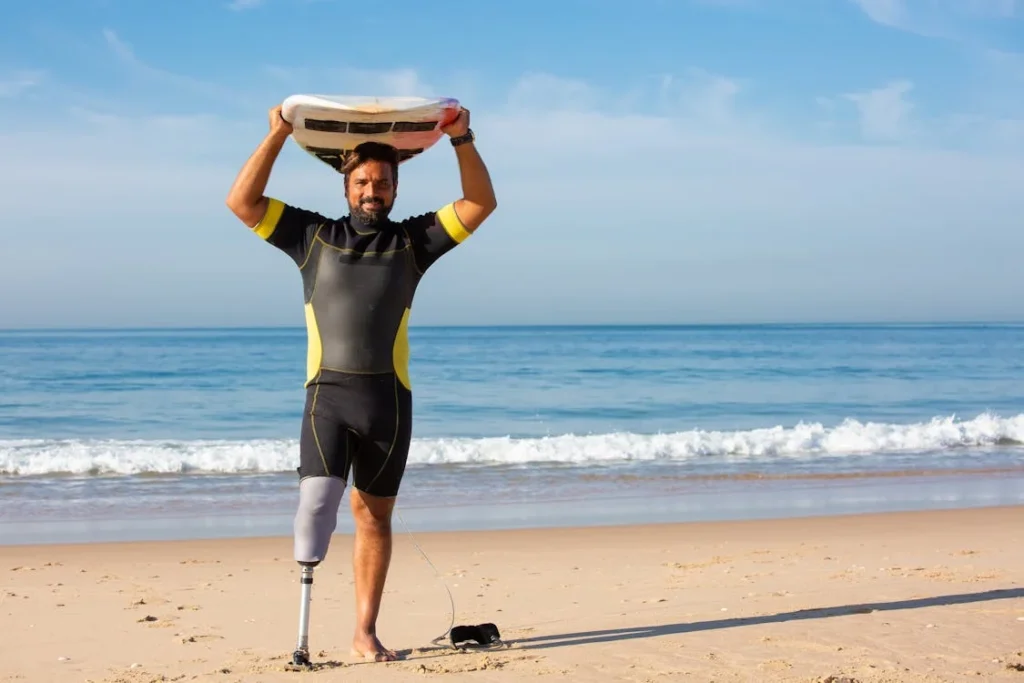
The Importance of Residual Limb Shaping and Preservation
What Surgeons Can Do to Make or Break Prosthetic Success
One of the most influential aspects of post-amputation recovery is the shape, length, and tissue quality of the residual limb. These factors are almost entirely determined during surgery—long before the patient even thinks about using a prosthetic.
And that means the surgeon’s decisions can either open doors or create barriers for the prosthetist later on.
When a surgeon carefully considers future prosthetic fitting, they make choices that directly influence socket comfort, load distribution, and long-term mobility.
This includes how much soft tissue to leave, whether the bone edges are smoothed properly, and how nerves and blood vessels are managed to avoid neuromas or pain.
A well-shaped limb makes it easier for a prosthetist to create a secure, comfortable socket—one that fits snugly without pressure points or instability. A poorly shaped limb, on the other hand, may require multiple refittings, padding adjustments, or even surgical revision.
This is why early coordination between surgeons and prosthetists is essential. If the surgeon understands socket dynamics, and the prosthetist is aware of surgical intent, the outcome is far more predictable. This isn’t just technical alignment—it’s teamwork with the patient’s mobility in mind.
When a limb is shaped with care and foresight, it helps amputees regain balance, trust their prosthesis, and move without hesitation. That’s not just clinical—it’s life-changing.
Early Intervention and Its Impact on Rehabilitation Success
Why Waiting Too Long Reduces the Benefits of Physical Therapy
Physical therapy after amputation is a cornerstone of recovery. But its success depends heavily on when prosthetic planning begins. If the limb is healing but there’s no movement training, muscle wasting sets in fast.
Without a prosthetic or preparatory device, the person stays immobile. Joints stiffen. Core strength weakens. Balance deteriorates.
By the time a prosthetist is brought in, the body is no longer ready. Instead of learning how to walk, the patient must relearn how to move. This slows progress and lowers morale.
In contrast, when surgeons and prosthetists plan early, rehab starts with a clear roadmap. The patient may receive a shrinker, liner, or even a temporary prosthetic to help maintain limb shape and prepare the body for future load-bearing.
These small interventions have massive impacts. They keep the residual limb active. They preserve mobility. They keep the patient mentally engaged. And they reduce the risk of developing compensation habits that are hard to unlearn later.
This is where surgeons and prosthetists must work hand-in-hand with physiotherapists. Together, they form a rehabilitation triad that surrounds the patient with support—not just after healing, but throughout the process.
Early intervention turns passive recovery into active participation. And that changes everything.
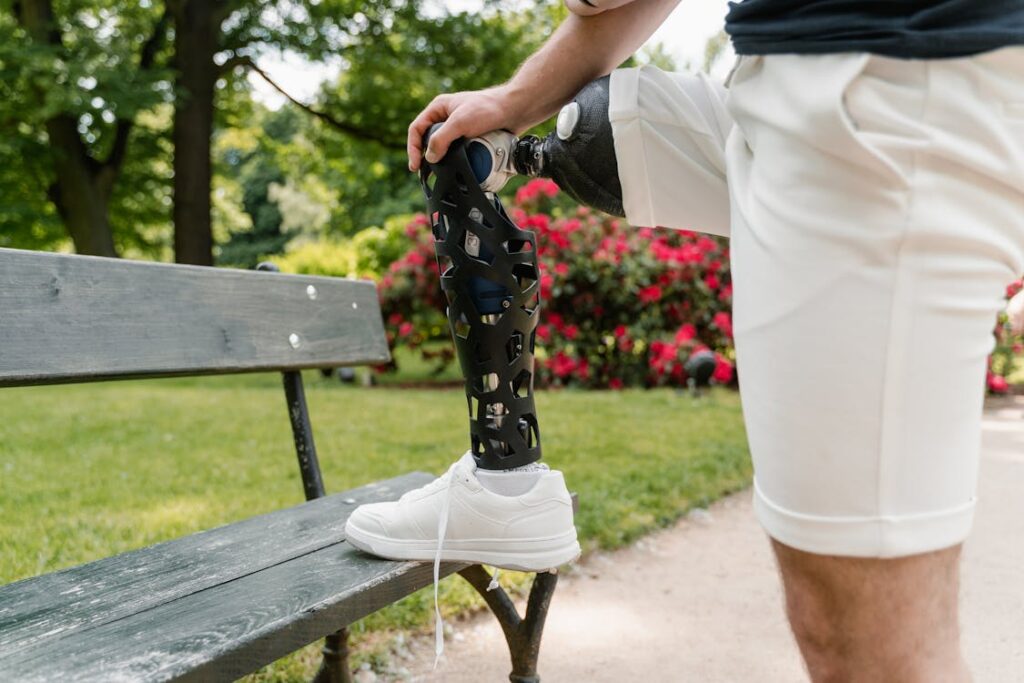
Establishing Pre-Amputation Consultations with Prosthetists
Helping Patients Visualize the Journey Ahead
In many healthcare settings, patients only meet their prosthetist after surgery. By then, they’ve already gone through emotional trauma, physical loss, and multiple unanswered questions. The idea of standing or walking again can feel distant—almost impossible.
But what if prosthetic planning began before the surgery?
Pre-amputation consultations allow the prosthetist to meet with the patient and their family early. During this meeting, they explain the prosthetic journey: the stages of healing, when fitting begins, what devices may be used, and how movement is restored over time.
This early conversation turns confusion into clarity. It helps the patient mentally prepare. It gives them a face to trust. And it removes the fear of the unknown.
When people understand what’s coming, they face surgery with a different mindset. They know there’s a plan. They know who to call. They know that recovery is not a mystery—it’s a process, with milestones and progress.
Involving the prosthetist before surgery also allows for more tailored surgical decisions. If a patient has unique goals—returning to athletics, using specific footwear, or managing comorbidities—the prosthetist can advise the surgeon on how to preserve those options.
This isn’t just best practice—it’s patient-centered care at its best.
The Psychological Role of Professional Continuity
How Relationships Impact Recovery Confidence
Surgery and prosthetic care can feel clinical, procedural, and at times, impersonal. But when a patient sees the same professionals—working together, showing up at different phases—it builds trust. That continuity creates a sense of security.
Imagine this: a surgeon speaks kindly about the prosthetist before the operation. Then, after surgery, the same prosthetist visits during early recovery. Later, they guide the fitting process. The patient feels like they’re not being passed from hand to hand—they’re being guided by a team.
This trust boosts morale. The patient knows who to turn to. They feel heard. And that sense of familiarity reduces anxiety, increases cooperation, and fosters hope.
Too often in fragmented care, patients are left to repeat their story at every stage. Each new professional feels like a reset. But when care is continuous, recovery feels consistent. That emotional stability is deeply tied to physical progress.
Professional continuity is not a luxury. It’s a need—one that can be met through coordinated planning between the surgical and prosthetic teams from day one.
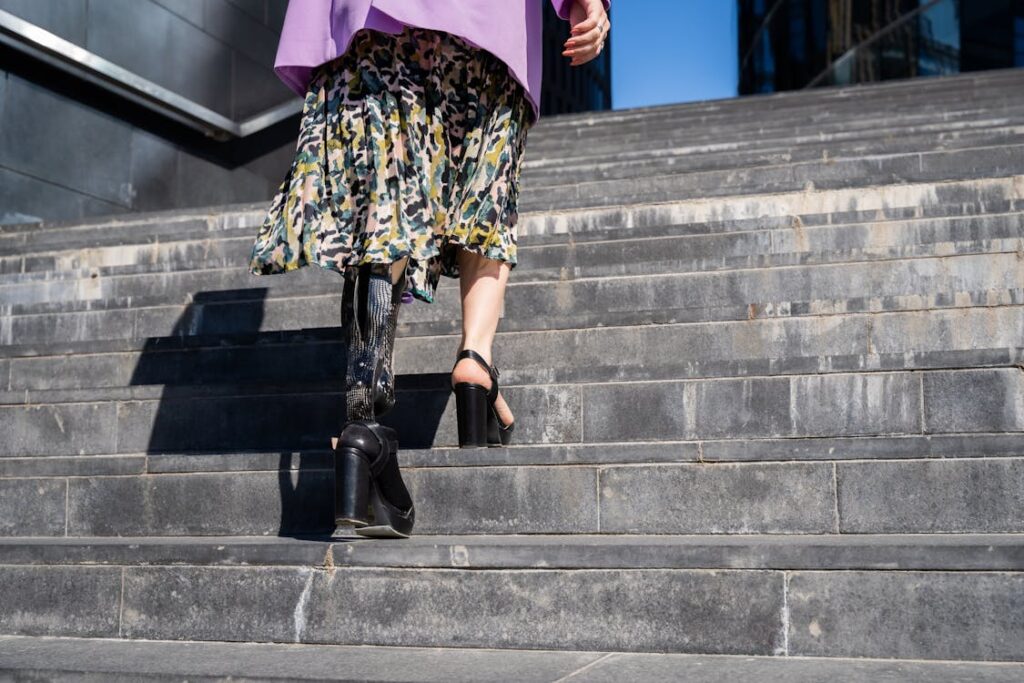
Educating Surgeons in Prosthetic Principles
Bridging the Knowledge Gap for Better Outcomes
Many surgeons, especially in high-pressure environments, are focused on immediate concerns—stopping bleeding, avoiding infection, and ensuring post-operative safety.
These are vital, of course. But what’s often missing is in-depth knowledge of prosthetic mechanics, socket interface challenges, or gait dynamics.
This gap creates a disconnect between the surgical result and the prosthetic solution. It’s not about fault—it’s about education.
Workshops, collaborative case reviews, and integrated rounds where prosthetists educate surgeons (and vice versa) can make a powerful difference.
When a surgeon understands how bone length affects stride, or how a specific nerve placement might lead to socket pain, they begin operating with more long-term thinking.
Likewise, when prosthetists understand surgical limitations, they stop making unrealistic requests and start making smarter design choices.
Mutual respect is born through shared knowledge. And that respect builds stronger teams—teams that see the patient as a shared responsibility.
At Robobionics, we’ve found that surgeon-prosthetist education isn’t just a back-office exercise. It’s a frontline strategy for building better futures.
Prosthetic Planning in Emergency vs. Elective Amputations
The Challenges of Trauma Cases and How to Address Them
While planned amputations often allow for smoother coordination between teams, emergency surgeries following trauma don’t offer the same luxury. In these cases, the priority is survival. There’s little time to consult with a prosthetist or plan limb shape with recovery in mind.
But even in these high-pressure situations, a basic awareness of prosthetic needs can make a major difference.
If surgeons can keep socket compatibility in mind—avoiding irregular limb contours, preserving as much functional length as possible—they give prosthetists a better chance to work successfully later.
After the emergency phase, it’s essential to bring the prosthetist into the loop early. They can assess the limb, recommend wound protection strategies, and begin mental prep with the patient.
They may even design early-stage prosthetic solutions that allow limited mobility before final fitting.
Surgeons handling trauma must also work closely with therapists and social workers to connect patients with prosthetic care post-discharge. Too often, these cases slip through the system because “the job is done.” But without timely prosthetic planning, the story ends halfway.
Emergency amputees deserve the same care, support, and planning as elective cases. They may need more time, but not less attention.
Conclusion
Prosthetic success doesn’t start with a fitting—it starts with a plan. And that plan must be built by both the surgeon and the prosthetist, working together with the patient at the center. When communication is strong, when decisions are shared, and when timing is prioritized, outcomes are better. Not just in how a person walks, but in how they feel, think, and live.
Surgeons bring surgical precision. Prosthetists bring movement expertise. But together, they offer something more: a path to wholeness. At Robobionics, we believe in that path. We believe in care that starts early, includes everyone, and leads to lifelong strength.
Because a prosthesis is not just about standing up—it’s about standing tall. And that journey begins when everyone takes the first step together.



